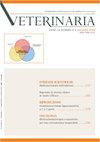鱼类误标检测最常用方法概述
Q4 Veterinary
引用次数: 2
摘要
全球鱼类消费的增加带来了鱼类标签错误问题,给消费者带来经济损失,甚至可能导致消费者的健康风险。因此,不断发展用于鉴定确切鱼类种类的方法是必不可少的。有许多现代鉴定方法,使用DNA或特定的鱼类蛋白质作为生物标志物,但它们都有各种各样的优点和缺点。基于蛋白质的方法包括电泳方法、ELISA、HPLC和MALDI-ToF质谱法,而以DNA作为生物标志物的方法包括PCR-RFLP、SSCP、qPCR、RAPD、FINS、DNA微阵列、DNA条形码、焦磷酸测序和元条形码。新的或改进的方法不断发展。大多数方法在分析生鱼或轻度加工的鱼(如冷藏或冷冻)时表现出更好的性能,而热处理通常会导致生物标志物分子的变化,使物种鉴定变得困难。目前还不存在理想的方法,但DNA条形码、MALDI-ToF质谱和元条形码等方法是最有潜力的方法。本文章由计算机程序翻译,如有差异,请以英文原文为准。
An overview of most commonly used methods for detection of fish mislabeling
The increase of global fish consumption brings with it the problem of fish mislabeling, which leads to economic losses for consumers or may even result in consumers’ health risk. Thus, continuous development of methods used in identification of exact fish species is essential. There are numerous modern identification methods, which use DNA or specific fish proteins as biomarkers, but they all come with various benefits and drawbacks. Protein-based methods include electrophoretic methods, ELISA, HPLC and MALDI-ToF Mass Spectrometry, while the methods that use DNA as a biomarker include PCR-RFLP, SSCP, qPCR, RAPD, FINS, DNA microarray, DNA barcoding, pyrosequencing and metabarcoding. There is a continuous development of new or improved methods. Most of the methods display a much better performance when analyzing raw or lightly processed fish, such as chilled or frozen, while heat treatment often leads to changes in the biomarker molecules, making the species identification difficult. The ideal method does not yet exist, but methods such as DNA barcoding, MALDI-ToF Mass Spectrometry and metabarcoding are the ones that show most potential.
求助全文
通过发布文献求助,成功后即可免费获取论文全文。
去求助
来源期刊

Veterinaria
农林科学-兽医学
CiteScore
0.10
自引率
0.00%
发文量
21
审稿时长
>12 weeks
期刊介绍:
VETERINARIA is the official scientific journal of the Italian Companion Animal Veterinary Association (SCIVAC) and is published bimonthly by Edizioni Veterinarie (E.V.). Its aim is to promote the spread and development of new ideas and techniques in the field of clinical and veterinary practices, with the ultimate goal of improving and promoting the continuing education of veterinary practicioners. VETERINARIA publishes literature reviews, original articles, diagnostic corners and clinical cases on different topics related to medicine and surgery of the dog, cat and of other companion animals, as well as short communications from congresses.
 求助内容:
求助内容: 应助结果提醒方式:
应助结果提醒方式:


